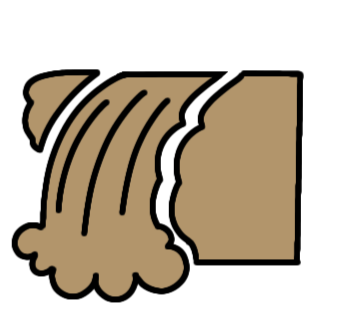
San Juan Islands Visitors Bureau
Inspiration for the Senses
Local Attractions







There are many ways to get to the San Juan Islands, and each option is a unique and beautiful journey. Once you've made your way to the Islands, there's so much to do! Get around by bike, boat, car, trolley, bus, or moped and discover the history, arts, and culture that make the San Juans so special. Follow the Scenic Byway to get the full island experience. Divided into three segments, the byway encompasses 30 miles along the beautiful, blue marine highway (Washington State Ferries routes), a driving tour around San Juan Island, and a driving tour on Orcas Island.
When you travel San Juan Island beyond Friday Harbor, you’ll journey through miles of farmland and stretches of forest on your way to American Camp or English Camp, the site of the famous 1859 “Pig War.” It was the last time that the United States opposed Great Britain on American soil and the two countries settled ownership of the islands through peaceful arbitration, following an eight-year confrontation. The national park marks the sites of both the U.S. and British encampments. American Camp includes the island’s longest stretch of beach, South Beach, and a network of forested and open trails along the coast,
Lime Kiln Point State Park on the island’s west side is also known as Whale Watch Park for good reason—the three local orca pods are frequent summer visitors. The funky Whale Museum in Friday Harbor has the same quirky, historic feel as old museums in, say, Nantucket or Cape Cod. A little bit science, a little bit theater, this fascinating collection of bones and hydrophones is fun for kids but just as interesting for grown-ups.
Step onto horseshoe-shaped Orcas Island, drop your suitcase or backpack, and drink in the green paradise the locals call “the gem of the San Juans.” It’s a magical mix of arts and culture, lush forests, pristine lakes, and endless outdoor possibilities. Most of Orcas Island’s 57 square miles are rural and hilly, a pleasure for drivers and a challenge for cyclists, with curving roads that wind through forests and past artists’ studios, fields with old apple barns, and the occasional turn-of-the-century prune drying barn.
Don’t be startled on your first visit to Lopez Island when people wave to you from their cars. This is “the Friendly Isle.” The Lopez landscape blends forests with rolling farmlands, quiet bays, and driftwood-strewn beaches with distant views of mountain ranges and snow-tipped Mount Baker. Lopez’s natural beauty and quality of life have attracted a variety of residents—artists, craftspeople, entrepreneurs, musicians, farmers, fishermen, and nature lovers. Scandinavian farmers arrived here in the 1850s, drawn by the island’s gentle topography, and Lopez Island farms today raise an eclectic range of products, from sheep to llamas, wine grapes to apples, pears to kiwis. Lopez Village is the commercial hub of the island, located about 4.5 miles from the ferry landing nestled along the entrance to Fisherman Bay. In the Village, find out more about local history at the Lopez Island Historical Museum.
The San Juan Islands are well known for wildlife watching, adventure sports like sea kayaking, and fresh, local food. What you won’t see in the guidebooks are the ghosts. The Moran Mansion at Rosario Resort, the Hotel de Haro at Roche Harbor Resort, the Orcas Hotel, and the Outlook Inn in Eastsound are a few of the residences of island spirits.
Follow your passions, whether it be art, food, or just the beautiful scenery. Those who welcome you want to acknowledge and thank the past, present, and future generations of all Native Nations and Indigenous Peoples whose ancestral lands you travel, explore, and play on. Always practice Leave No Trace ethics on your adventures and follow local regulations. Please explore responsibly!


Fun Facts
Construction of the cannon redoubt in the American camp on San Juan Island was supervised by military engineer Henry Martyn Robert. Robert’s fascination with parliamentary procedure later led him to pen Robert's Rules of Order.
Upcoming Events
No upcoming events scheduled.




- San Juan Islands Visitors Bureau
- Friday Harbor, WA
- 360-378-3277
- San Juan Islands Visitors Bureau